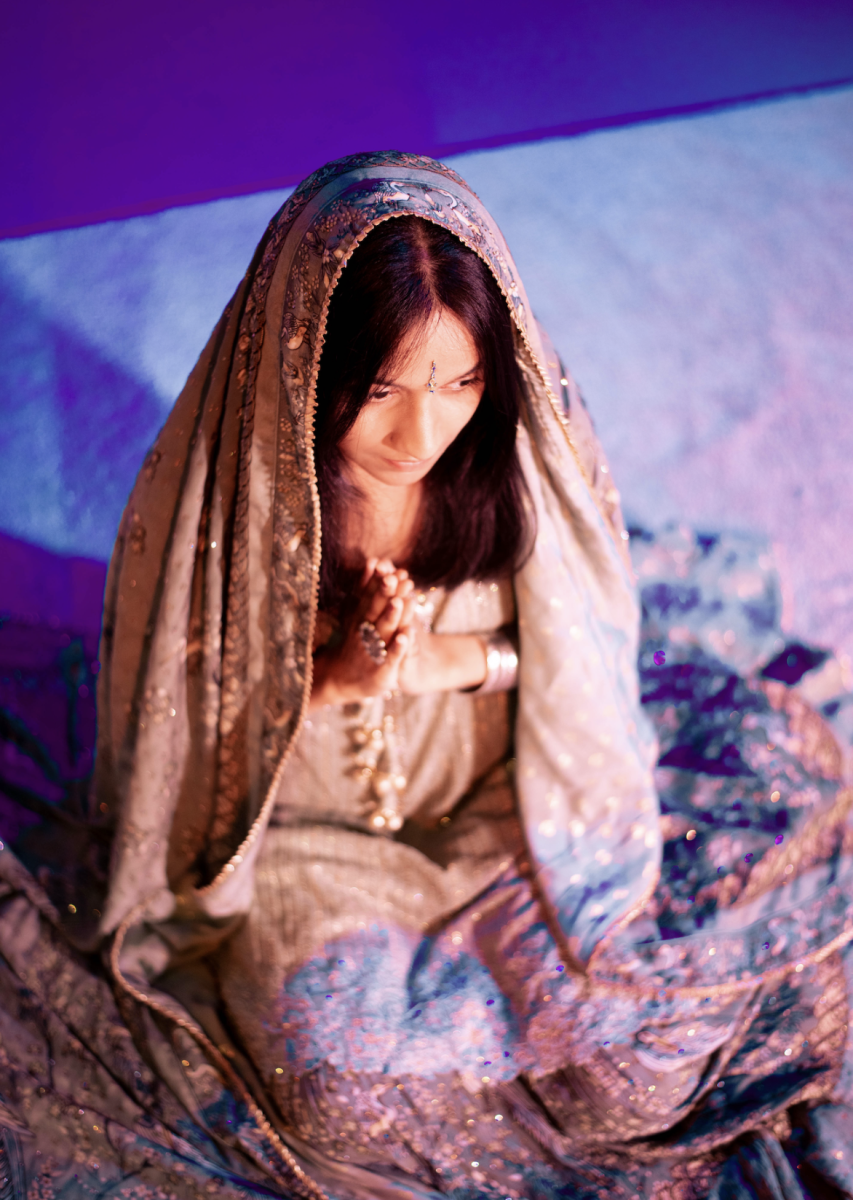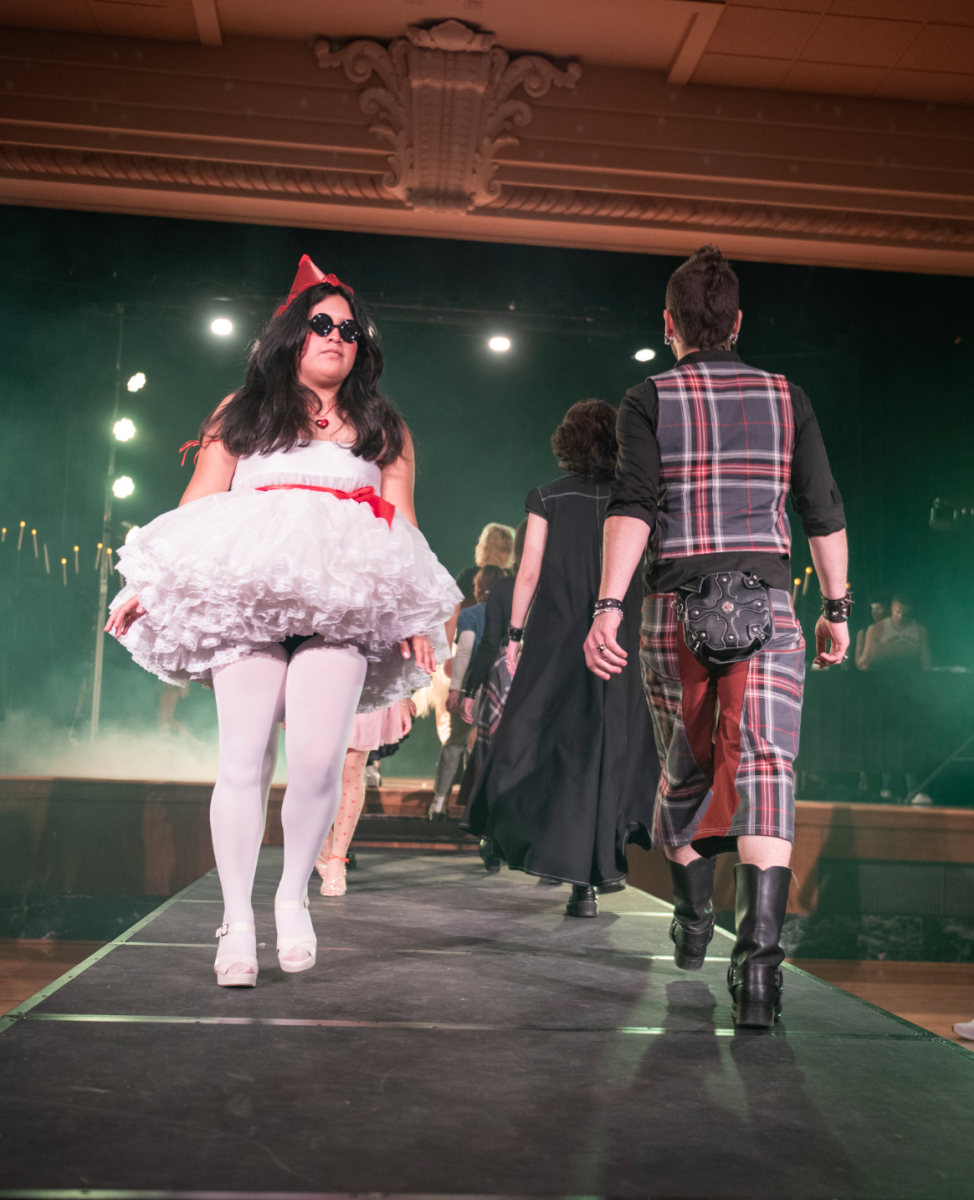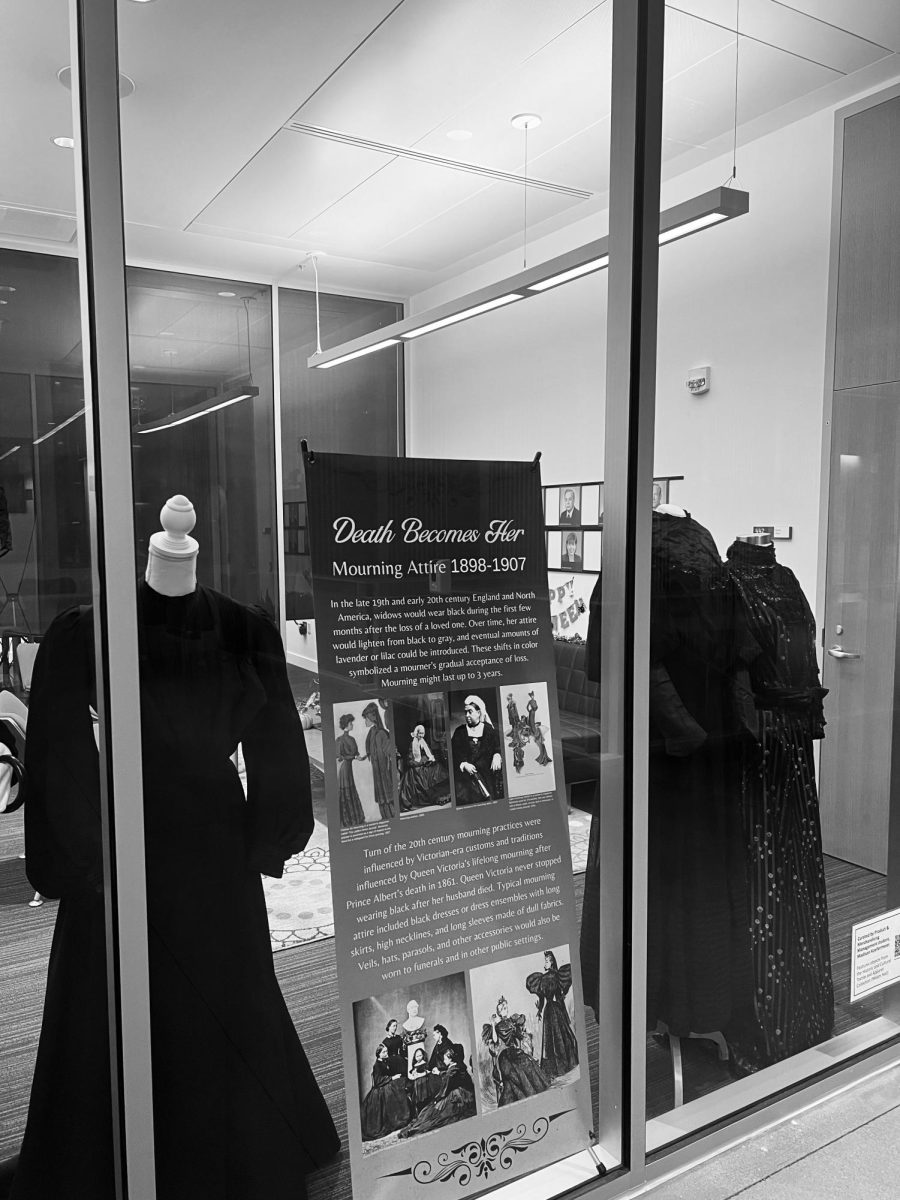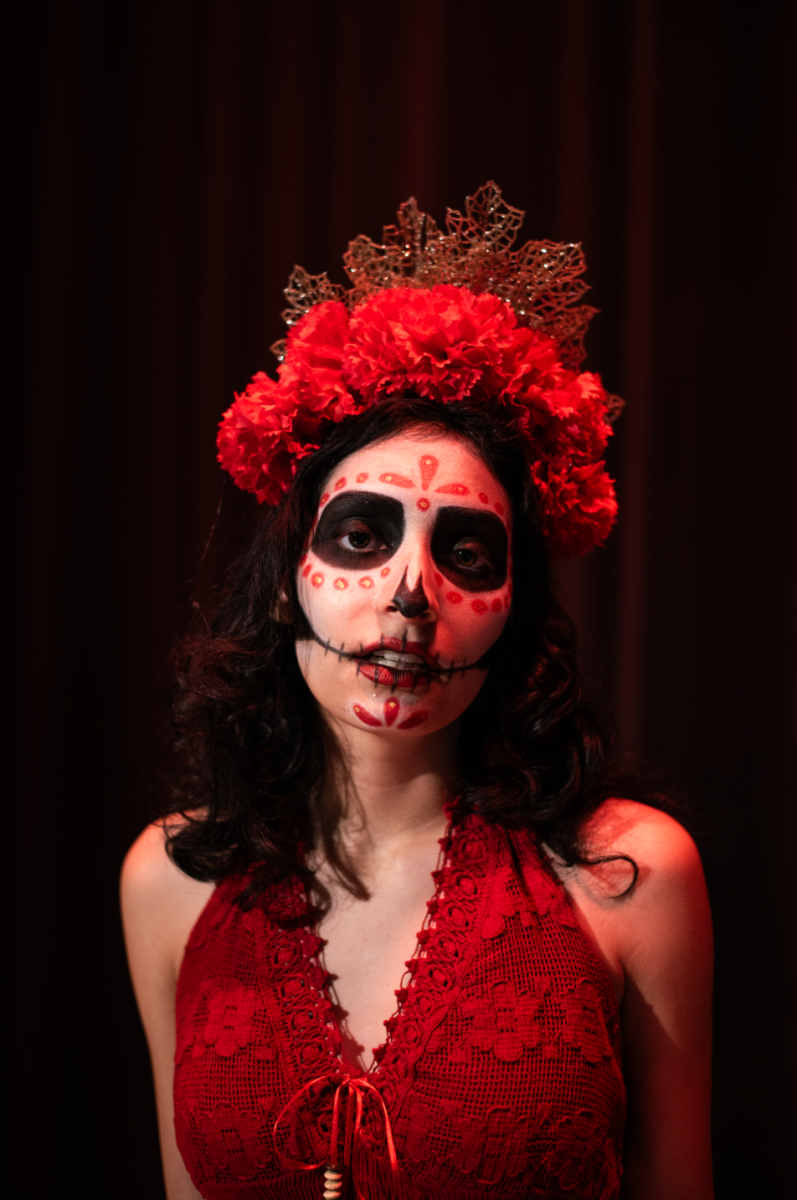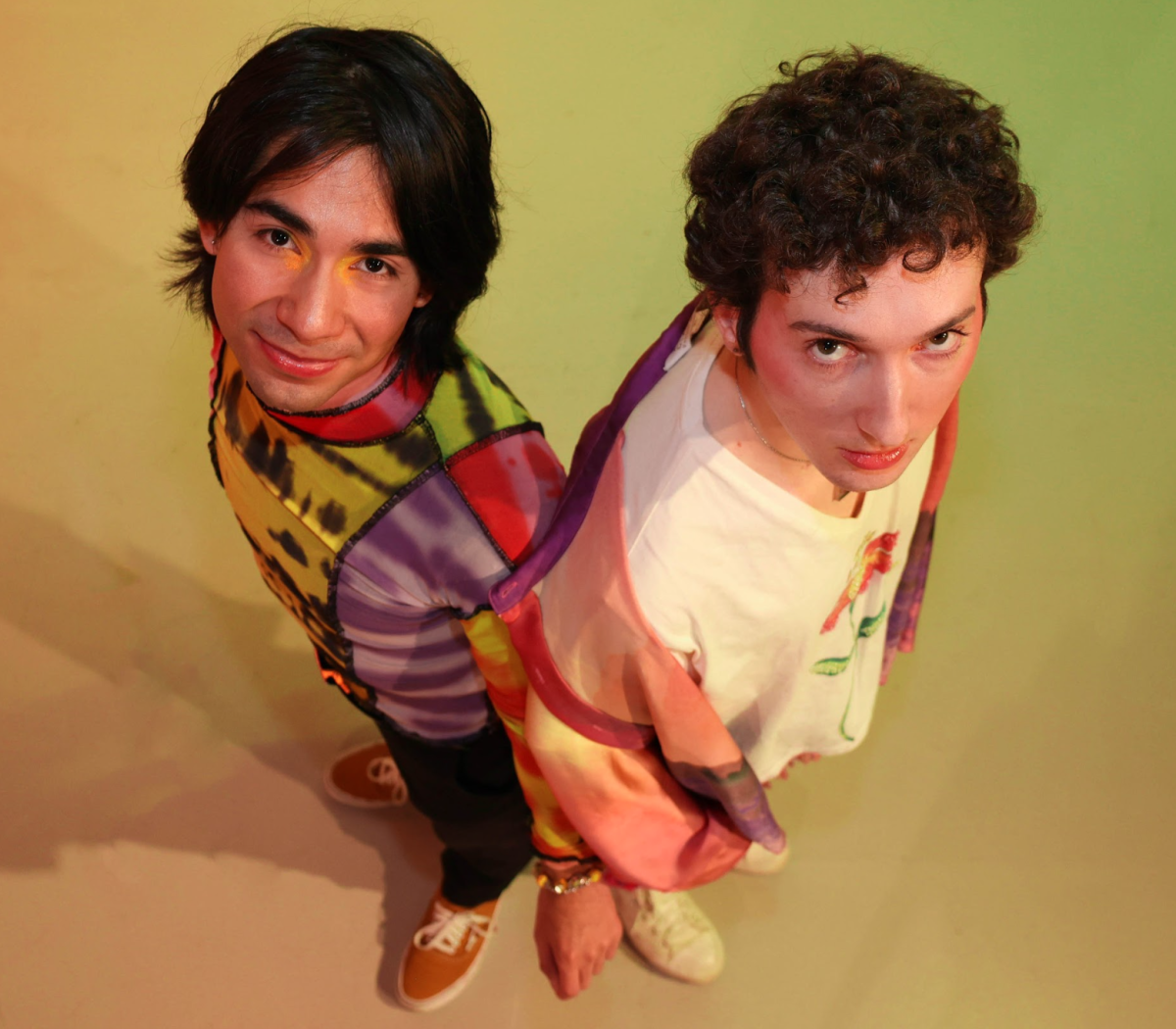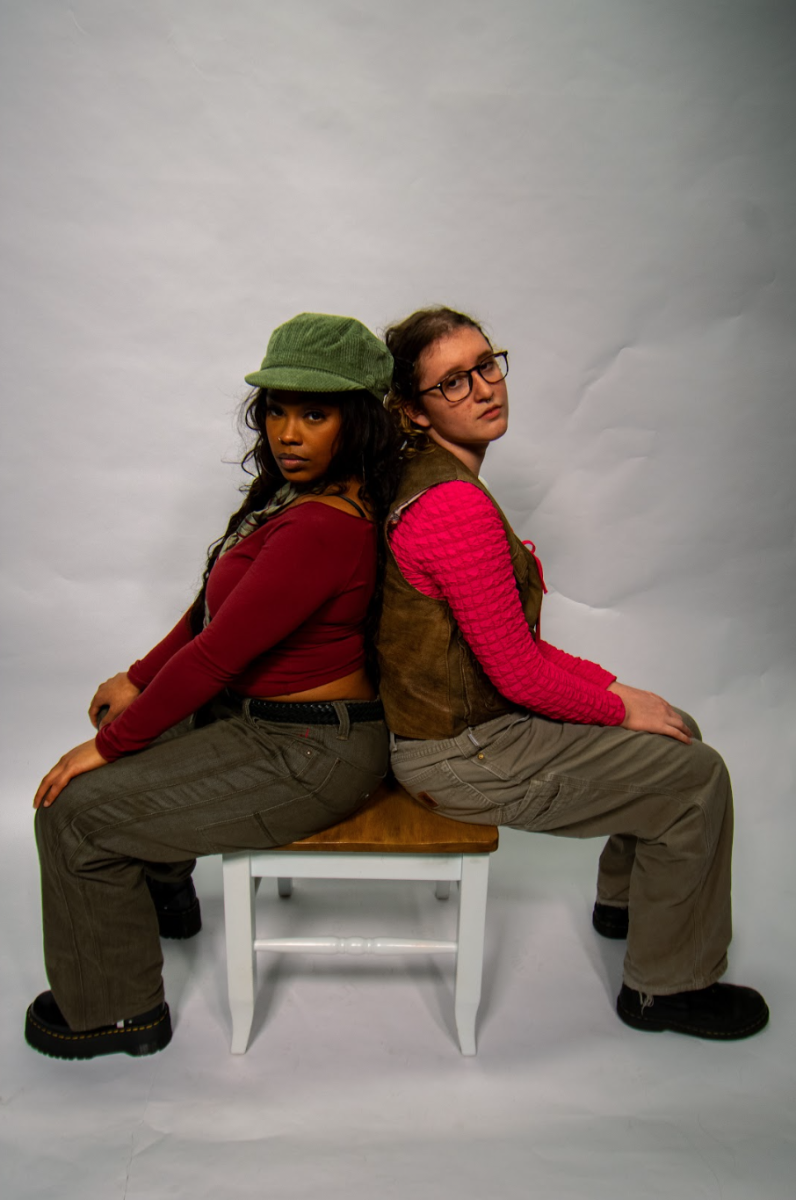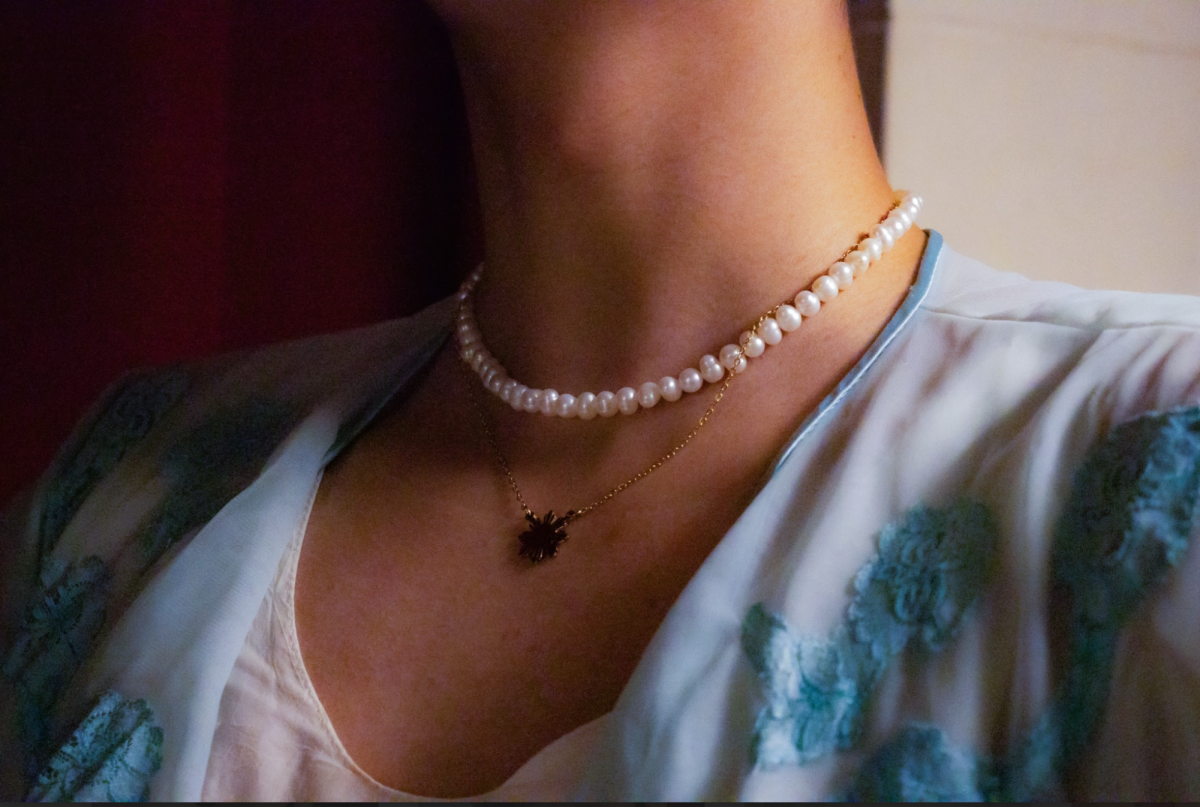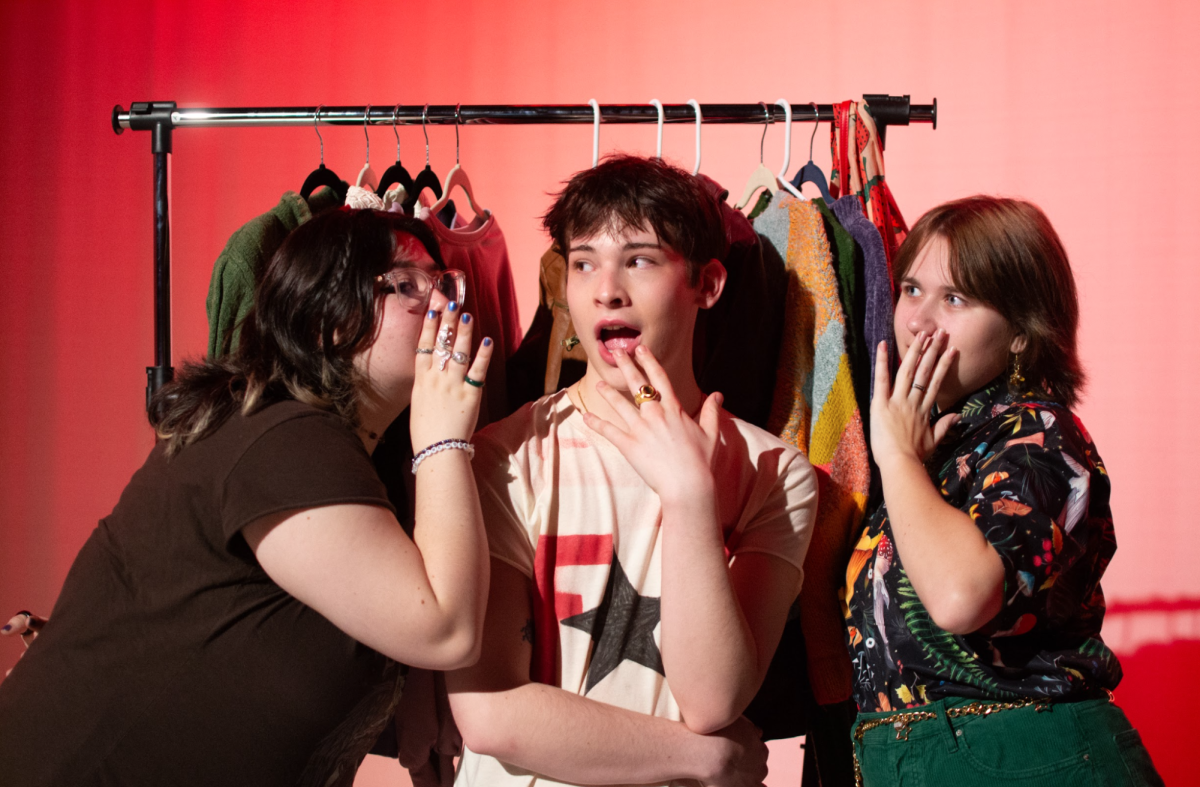Photo directing by Abigael Pearl Craig, writing by Alexandra Tejeda
Embroidery is a simple art form of needle and thread that creates intricate and unique pieces of art and design that have survived and adapted through generations.
Marianne Dickson, a senior instructor in apparel design said,“It falls into these categories of recycling textiles, taking swatches of old fabrics and putting them back together and making them stronger…It gives it a unique look and texture, while being very functional.” Dickson considers embroidery a connection between the past and the present: a culture and a language that has evolved through the centuries.
Second-year psychology major, Tessa Hite, is from a family of crafters and has been embroidering for around three years.
“I like embellishing things. I feel that I mostly take clothes that don’t fit me or if they have holes, I try to find a way to mend that in a cute way.” Hite said. “It’s mostly practical embroidery.”
With experience in embroidery, Dickson and Hite offer tips for those who are interested in embroidering but don’t know how to begin.
- Getting started
Dickson and Hite suggest looking for inspiration and tutorials on Youtube and Pinterest. As an instructor with an embroidery class coming up this spring term, Dickson has her own suggestions on what beginners should get.
Ideally an embroidery kit will already come with what you need. However, in any matter, Dickson recommends beginners start out with a 5–6 inch diameter wooden hoop, a variety pack of embroidery or tapestry needles, and any color thread.
Technically, you can start off with any fabric, even from clothes you already have. Hite goes to Michaels and Oregon State University’s Craft Center for her embroidery supplies.
“Especially if you’re practicing doing embroidery on scrap fabric, (the OSU Craft Center has) lots of little random pieces that they don’t use,” Hite said.
Dickson cautions against making the length of the string too long when you begin to embroider. A longer thread is more prone to knots, which can lead to problems in your project.
Dickson considers a good length to be from your nose to the end of your arm. By having a thread that is proportional to your body, it is easier for the mobility of your body in that you don’t strain yourself pulling the thread back and forward.
- Create the vibes
During an embroidery session, Hite will usually put on music or a show and create a cozy atmosphere to sink into.
“I like a little cozy time.” Hite said. “I like a cup of tea, lots of blankets, probably on my bed.”
Dickson, who often listens to sports podcasts as she embroiders, suggests putting something on in the background to help pass the time. Not every embroidery session has to take place in the same area. In many instances, you could simply toss your project into a bag and head out, taking the embroidery session with you.
“Last year, when it was nice out in spring term, I ended up just sitting with my friends, picnicking and doing it,” said Hite.
- Have patience with yourself and practice.
Part of the embroidery process is that it’s a lengthy and time-consuming hobby. The payoff may not always be immediately rewarding, which can result in discouragement. Hite recommends starting with smaller projects using scrap fabric, as opposed to starting on the fabric you want to embellish.
“Not necessarily your favorite piece of clothing? You can always just take it out,” Hite said, “but it’s nice to have a little practice round before trying to modify your favorite thing.”
“I’m guilty of this,” Hite said, “to pick up projects because you’re really excited about them and then, when there’s not immediate reward, to discard them.”In Hite’s opinion, the biggest mistake people make when starting out is being too ambitious with their projects.
“When it doesn’t look exactly like the photo reference you’re looking at, (you’ll get) discouraged,” Hite said. “Pick something attainable because then you’ll be so much more happy when you get it.”
Whether you have years of experience under your belt or are barely starting out, it all boils down to using your hands and century-old practices to create something uniquely yours. “The main thing is making your clothes feel more personal and unique. That’s my favorite part of it,” Hite said.
“There’s no speed, there’s no shortcuts. There’s nothing — it’s you, a needle and thread.” Dickson said.




